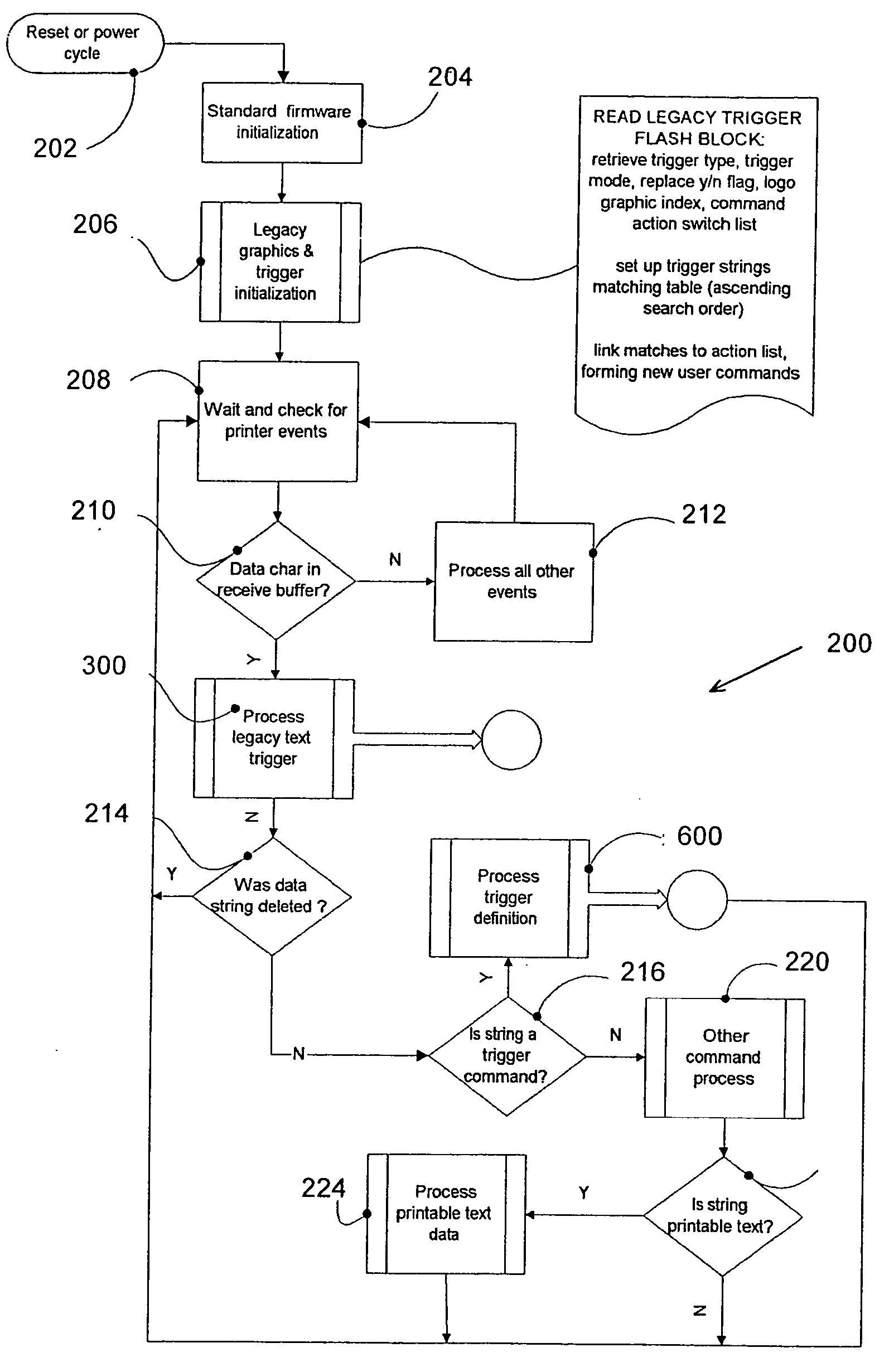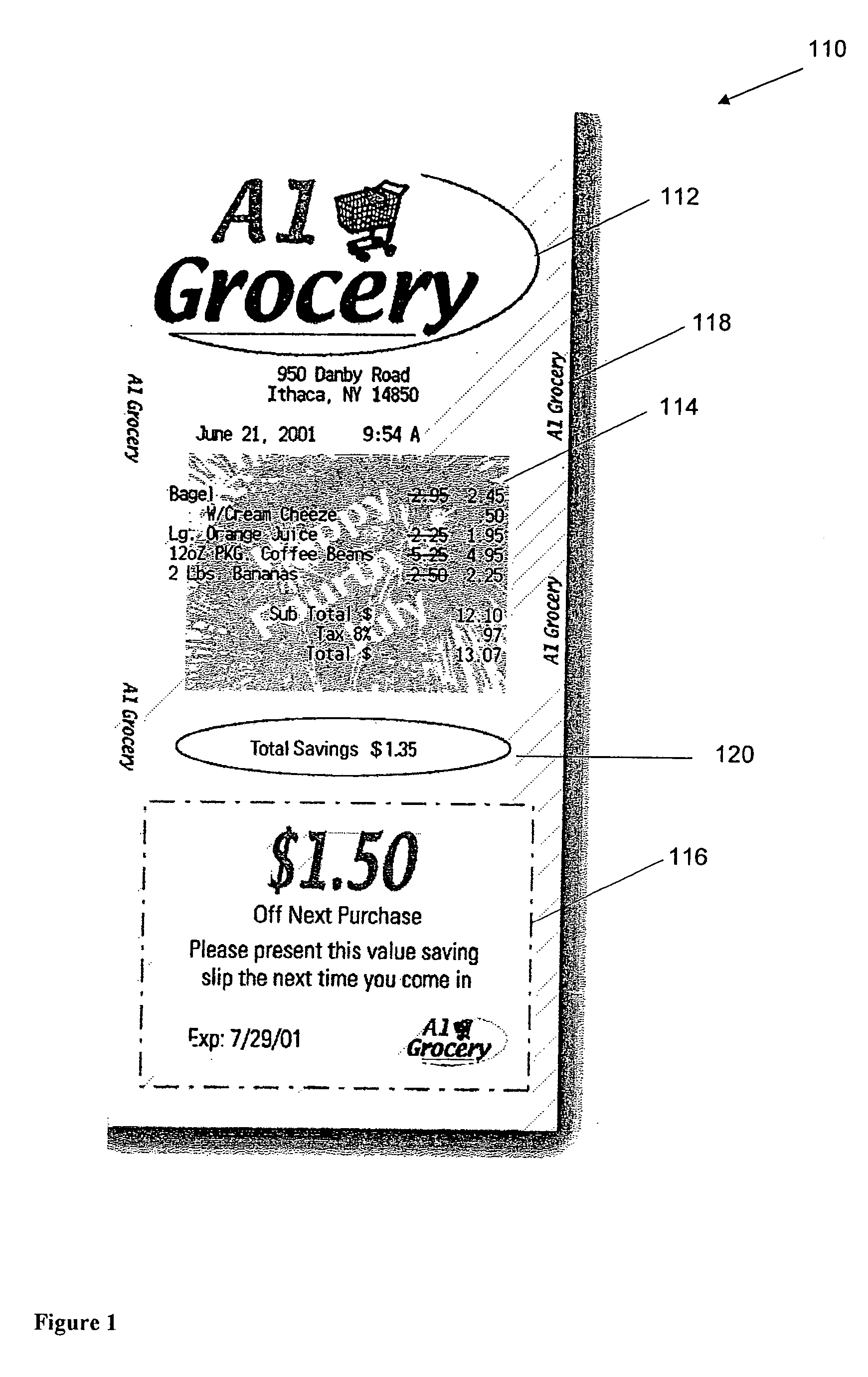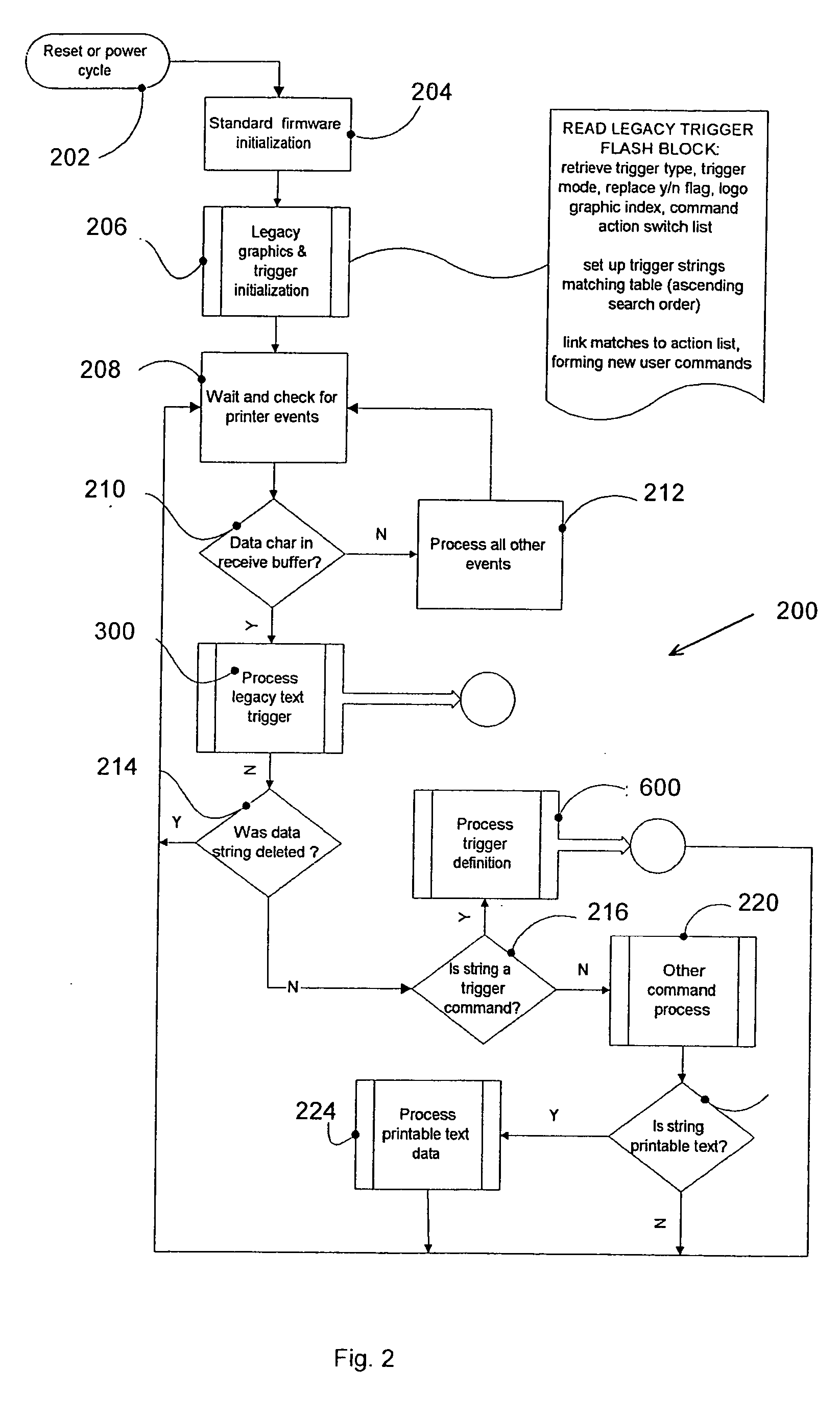Method and system for suppressing printing of graphics in a POS printer
- Summary
- Abstract
- Description
- Claims
- Application Information
AI Technical Summary
Benefits of technology
Problems solved by technology
Method used
Image
Examples
Embodiment Construction
[0028] The present invention comprises four novel print functions. The first step is configuring a string match in the printer input stream that triggers suppression of pre-configured legacy graphics, such as a top logo, bottom logo, surround graphic, watermark, and / or margin message. The second step is configuring a string match in the input stream that triggers enabling of configured legacy graphics. The third step is the run-time issuing of enable or disable actions for configured legacy graphics. The fourth step is providing run-time status command enhancements that report on the current configuration state for legacy graphics.
[0029] While these functions are described as being implemented in POS printer firmware, equivalent action can be coded into a host printer driver. The host driver would then transform the printer input stream that the application generates into one that needs only a primitive capability from the printer, i.e., the ability to print a raster dot row. Anoth...
PUM
 Login to View More
Login to View More Abstract
Description
Claims
Application Information
 Login to View More
Login to View More - R&D
- Intellectual Property
- Life Sciences
- Materials
- Tech Scout
- Unparalleled Data Quality
- Higher Quality Content
- 60% Fewer Hallucinations
Browse by: Latest US Patents, China's latest patents, Technical Efficacy Thesaurus, Application Domain, Technology Topic, Popular Technical Reports.
© 2025 PatSnap. All rights reserved.Legal|Privacy policy|Modern Slavery Act Transparency Statement|Sitemap|About US| Contact US: help@patsnap.com



